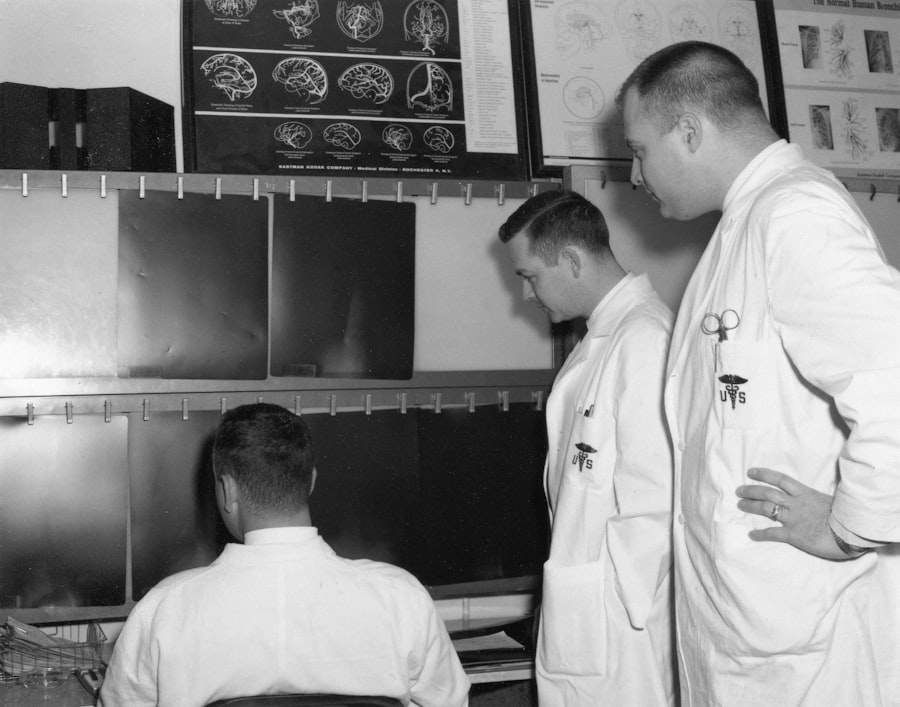Clinical trials are a cornerstone of modern medical research, serving as the primary means through which new treatments, drugs, and medical devices are evaluated for safety and efficacy. These studies are meticulously designed to answer specific research questions, often focusing on how a new intervention compares to existing treatments or a placebo. The process of conducting clinical trials is governed by strict regulatory frameworks to ensure the protection of participants and the integrity of the data collected.
The significance of clinical trials cannot be overstated; they are essential for advancing medical knowledge and improving patient outcomes. The journey of a clinical trial typically begins in the laboratory, where researchers identify potential therapeutic targets and develop hypotheses. Once a promising candidate is identified, it progresses through several phases of clinical testing.
Phase I trials primarily assess safety and dosage, while Phase II trials focus on efficacy and side effects. Phase III trials involve larger populations to confirm effectiveness and monitor adverse reactions in diverse groups. Finally, Phase IV studies may be conducted post-marketing to gather additional information about long-term effects and optimal use in the general population.
This structured approach ensures that only the most effective and safe treatments make it to market, ultimately benefiting patients worldwide.
Key Takeaways
- Clinical trials are essential for evaluating new medical treatments and improving patient outcomes.
- The new studies employed rigorous methodologies to ensure reliable and valid results.
- Key findings indicate significant improvements in treatment efficacy and safety profiles.
- Results suggest potential changes to patient care practices and treatment guidelines.
- Further research is needed to address limitations and confirm long-term benefits.
Methodology of the New Clinical Trial Studies
The methodology employed in new clinical trial studies is critical to their success and reliability. Researchers must carefully design their studies to minimize bias and ensure that the results are valid and applicable to the broader population. Randomized controlled trials (RCTs) are often considered the gold standard in clinical research.
In an RCT, participants are randomly assigned to either the treatment group or the control group, which helps eliminate confounding variables that could skew results. This randomization process is crucial for establishing a causal relationship between the intervention and the observed outcomes. In addition to randomization, blinding is another essential methodological component.
Single-blind studies keep participants unaware of which group they belong to, while double-blind studies ensure that neither participants nor researchers know who is receiving the treatment versus a placebo. This approach helps reduce bias in reporting and assessing outcomes. Furthermore, well-defined inclusion and exclusion criteria are established to select appropriate participants for the study, ensuring that the findings can be generalized to similar populations.
Data collection methods, such as surveys, laboratory tests, and imaging studies, are also standardized to maintain consistency across different sites and participants.
Key Findings and Results

The results of clinical trials can have profound implications for medical practice and patient care. For instance, a recent clinical trial investigating a novel immunotherapy for advanced melanoma demonstrated a significant increase in overall survival rates compared to traditional chemotherapy. In this study, patients receiving the new treatment experienced a median survival of 24 months, compared to just 12 months for those on standard therapy.
Such findings not only highlight the potential of innovative treatments but also underscore the importance of ongoing research in oncology. Another notable example comes from a clinical trial examining a new anticoagulant for patients with atrial fibrillation. The study revealed that the new drug reduced the incidence of stroke by 30% compared to existing anticoagulants while also presenting a lower risk of major bleeding events.
These results prompted a reevaluation of treatment protocols for atrial fibrillation, leading to updated guidelines that favor the new anticoagulant as a first-line therapy for eligible patients. The impact of these findings extends beyond individual patient care; they can influence healthcare policies and funding priorities as well.
Implications for Patient Care
| Metric | Description | Impact on Patient Care | Measurement Method |
|---|---|---|---|
| Patient Satisfaction Score | Measures patients’ overall satisfaction with care received | Indicates quality of care and patient experience | Surveys and feedback forms |
| Readmission Rate | Percentage of patients readmitted within 30 days of discharge | Reflects effectiveness of treatment and discharge planning | Hospital records and patient follow-up |
| Medication Adherence | Extent to which patients follow prescribed medication regimens | Impacts treatment outcomes and disease management | Pharmacy refill data and patient self-reporting |
| Time to Treatment | Duration between diagnosis and initiation of treatment | Affects prognosis and recovery speed | Electronic health records timestamps |
| Adverse Event Rate | Frequency of negative side effects or complications | Indicates patient safety and quality of care | Incident reports and clinical monitoring |
The implications of clinical trial findings for patient care are multifaceted and far-reaching. When new treatments demonstrate superior efficacy or safety profiles, healthcare providers must integrate this information into their clinical practice. This integration often involves updating treatment guidelines, educating healthcare professionals about new options, and ensuring that patients have access to these therapies.
For instance, when a groundbreaking study reveals that a new drug significantly reduces hospital readmissions for heart failure patients, cardiologists may begin prescribing this medication more frequently, ultimately improving patient outcomes. Moreover, clinical trials can also empower patients by providing them with more treatment options. As new therapies emerge from research, patients may have access to cutting-edge treatments that were previously unavailable.
This is particularly important for individuals with rare diseases or those who have exhausted all standard treatment options. By participating in clinical trials, patients not only contribute to scientific knowledge but also gain access to potentially life-saving interventions that could improve their quality of life.
Potential Limitations and Future Research Directions
Despite their critical role in advancing medical science, clinical trials are not without limitations. One significant challenge is the generalizability of trial results to broader populations. Many clinical trials have strict inclusion criteria that may exclude certain demographics, such as older adults or individuals with comorbidities.
As a result, while a treatment may prove effective in a controlled trial setting, its efficacy in real-world populations may differ significantly. Future research must focus on designing more inclusive trials that reflect the diversity of patient populations. Additionally, there is often a lag between the completion of clinical trials and the incorporation of findings into clinical practice.
This delay can be attributed to various factors, including regulatory hurdles, the need for further studies to confirm results, and resistance to change among healthcare providers. To address these issues, researchers should prioritize dissemination strategies that facilitate the rapid translation of trial findings into practice. This could involve developing partnerships with healthcare organizations to ensure that new evidence is communicated effectively to clinicians and patients alike.
Impact on Current Treatment Guidelines

The impact of clinical trial findings on current treatment guidelines is profound and often immediate. When robust evidence emerges from well-conducted studies, professional organizations responsible for developing treatment guidelines must evaluate this data critically. For example, when a large-scale trial demonstrated that early intervention with a specific biologic therapy improved outcomes in rheumatoid arthritis patients, the American College of Rheumatology updated its guidelines to recommend this therapy as a first-line treatment option.
These updates not only reflect the latest scientific evidence but also influence prescribing practices across healthcare systems. Physicians rely on these guidelines to inform their clinical decisions, ensuring that they provide care based on the most current research available. Furthermore, updated guidelines can lead to changes in insurance coverage policies, making new treatments more accessible to patients who need them.
Patient Testimonials and Experiences
Patient testimonials play an invaluable role in understanding the real-world impact of clinical trials and new treatments. Hearing directly from individuals who have participated in trials or received novel therapies can provide insights into their experiences beyond what clinical data alone can convey. For instance, a patient diagnosed with advanced lung cancer may share how participation in a clinical trial for an experimental drug not only extended their life but also improved their quality of life by reducing symptoms associated with their disease.
These personal stories can serve as powerful motivators for other patients considering participation in clinical trials or exploring new treatment options. They highlight the hope that innovative therapies can bring and underscore the importance of patient-centered care in clinical research. Additionally, testimonials can help demystify the clinical trial process for potential participants by addressing common concerns about safety and efficacy.
Conclusion and Recommendations for Further Action
In light of the critical role that clinical trials play in advancing medical knowledge and improving patient care, it is essential for stakeholders across the healthcare spectrum to prioritize support for ongoing research efforts. This includes advocating for increased funding for clinical trials, particularly those focused on underrepresented populations or rare diseases. Additionally, healthcare providers should actively engage with patients about available clinical trial opportunities, ensuring that individuals are informed about their options.
Furthermore, fostering collaboration between researchers, clinicians, and patient advocacy groups can enhance the relevance and applicability of clinical trial findings. By working together, these stakeholders can ensure that research addresses pressing healthcare needs while also promoting patient engagement in the research process. Ultimately, continued investment in clinical trials will pave the way for innovative treatments that improve health outcomes and enhance the quality of life for patients around the world.




